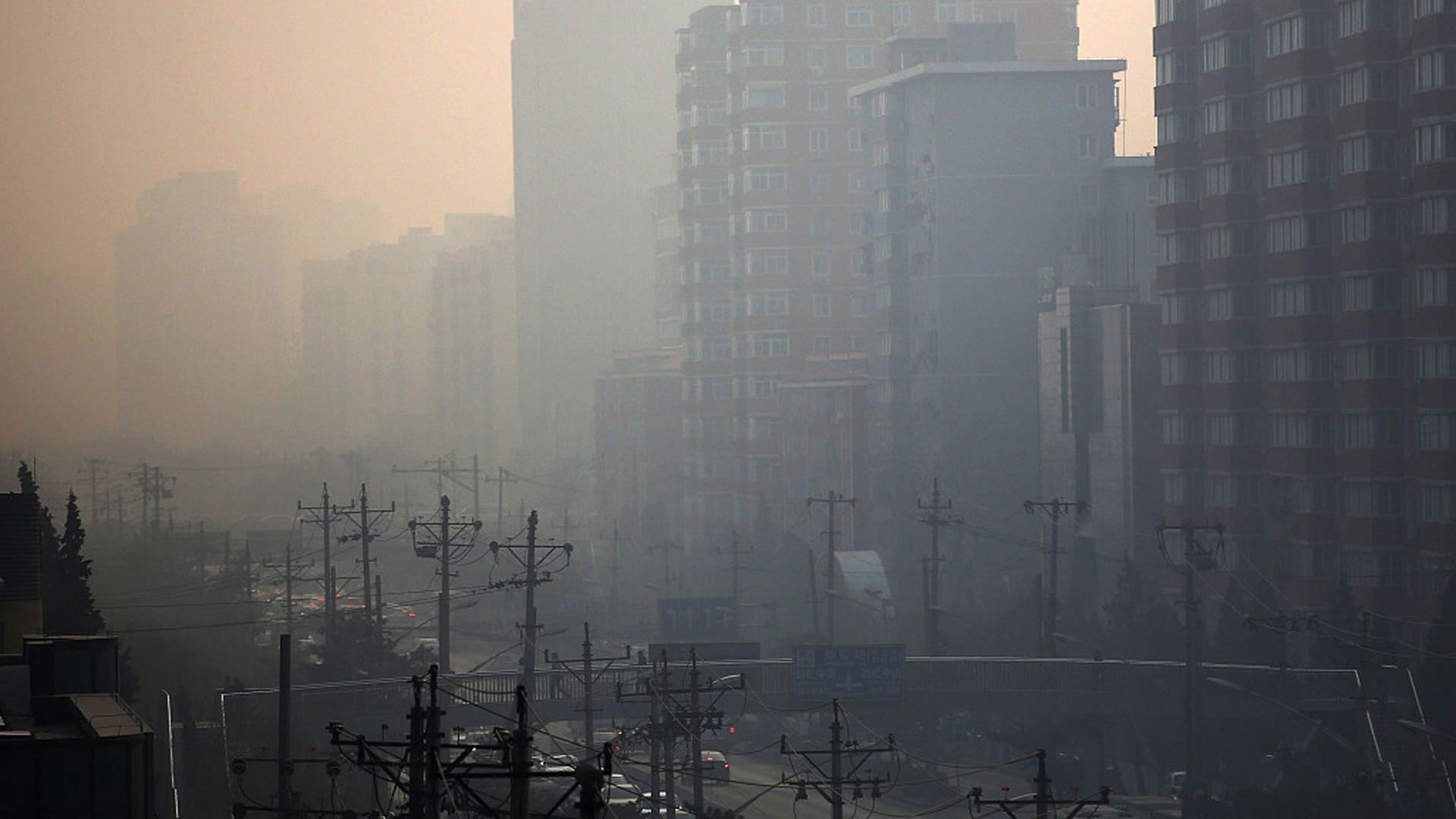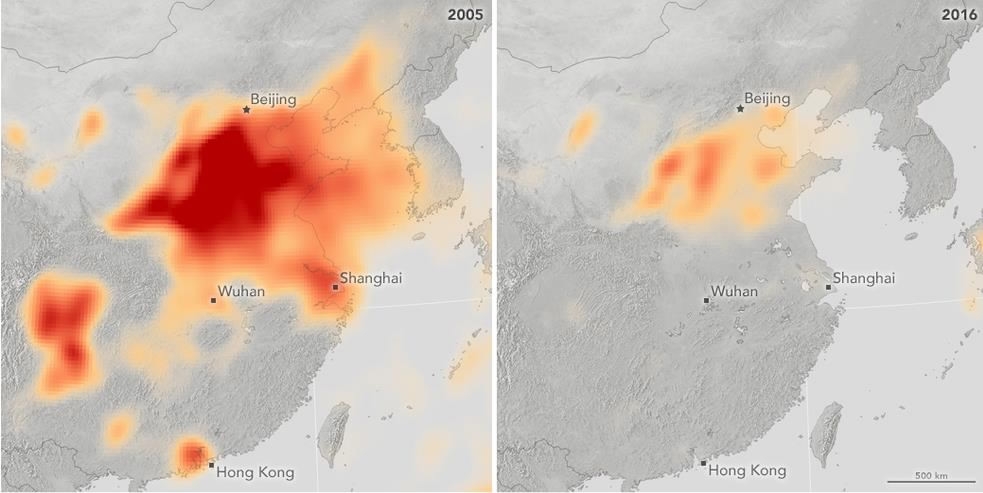
Tech & Sci
16:10, 11-Jan-2018
New study shows China's war on air pollution has wiped out Beijing's smog
Alok Gupta

China's notoriously polluted air is witnessing an unprecedented drop in concentration of pollutants. A record reduction in particulate matter (PM) 2.5 levels and that of other pollutants like sulfur dioxide has kept the choking winter smog away.
A series of reports released by Greenpeace researchers on Thursday, the Chinese Ministry of Environment Protection (MEP) on Wednesday and NASA and the University of Maryland in November reveals that air pollution in the Beijing region of 26+2 cities significantly dropped.
The 26+2 cities refer to Beijing, Tianjin and 26 other cities in Hebei, Shandong, Shanxi and Henan provinces.
The Greenpeace study claimed that from 2013 to 2017, average PM 2.5 levels fell 35 percent in 74 cities across China, but Beijing witnessed a massive decline of 54 percent. PM 2.5 refers to extremely fine particles that enter the bloodstream causing lethal diseases; its decline has likely prevented 160,000 premature deaths in 2017.
"PM 2.5 levels across the 28 cities fell by 33 percent in the last quarter of 2017, and Beijing levels fell by a whopping 54 percent," the report claimed.
Researchers pointed out that the government’s winter action plan targeting Beijing, Tianjin and 26 surrounding cities resulted in a dramatic decrease of pollution in the area. Measures have included curtailing industrial output, ramping up inspections of polluting factories and banning small-scale coal burning.
Interestingly, China’s MEP also released pollution data on Wednesday revealing that they exceeded their targets for controlling pollution in the winter months of 2017.
PM 2.5 concentrations have dropped by 34.3 percent compared to last year’s data of the 26+2 cities. Beijing witnessed a massive 53.8-percent decline in PM 2.5 levels in the winter months from October to December, MEP officials said.
MEP and Greenpeace both maintain that favorable weather conditions helped in curbing air pollution. Air quality is likely to deteriorate in the last week of January and early February due to low wind speed.
However, the Greenpeace study cautioned that while the pollution in the 26+2 cities is going through major decline, the country as a whole saw a drop of PM 2.5 levels of only 4.5 percent.
Sulfur dioxide concentration down by more than 50 percent: NASA

Sulfur dioxide concentration in China's air dropped by nearly 50 percent in the last decade. /NASA’s Earth Observatory Photo
Sulfur dioxide concentration in China's air dropped by nearly 50 percent in the last decade. /NASA’s Earth Observatory Photo
In another study, researchers at NASA and the University of Maryland in November found that China has drastically reduced sulfur dioxide emissions by 75 percent.
The lead author of the research paper, Can Li, who is also an associate research scientist at NASA’s Goddard Space Flight Center in Greenbelt, Maryland told NASA, "Sulfur dioxide levels in China declined dramatically even though coal usage increased by approximately 50 percent and electricity generation grew by over 100 percent."
Sulfur dioxide emissions are linked to coal burning in thermal power stations, factories, and heating. Globally, China and India are two of the largest consumers of coal. The study also found that sulfur dioxide emission in India has increased by more than 50 percent.
"This suggests that China is implementing sulfur dioxide controls beyond what climate modelers have taken into account," Li added.
Decrease in PM 2.5 leads to ozone pollution
The reduction in PM levels coupled with industrial emissions led to a spike in ozone level. The Greenpeace report claims that ozone level increased 10 percent year-on-year nationwide and 25 percent in the 28 Chinese cities.
Reasons for the increase in ozone level are industry and transport emissions, hot weather and reduction in particle pollution levels which allow more sunlight to penetrate, the report said.

SITEMAP
Copyright © 2018 CGTN. Beijing ICP prepared NO.16065310-3
Copyright © 2018 CGTN. Beijing ICP prepared NO.16065310-3